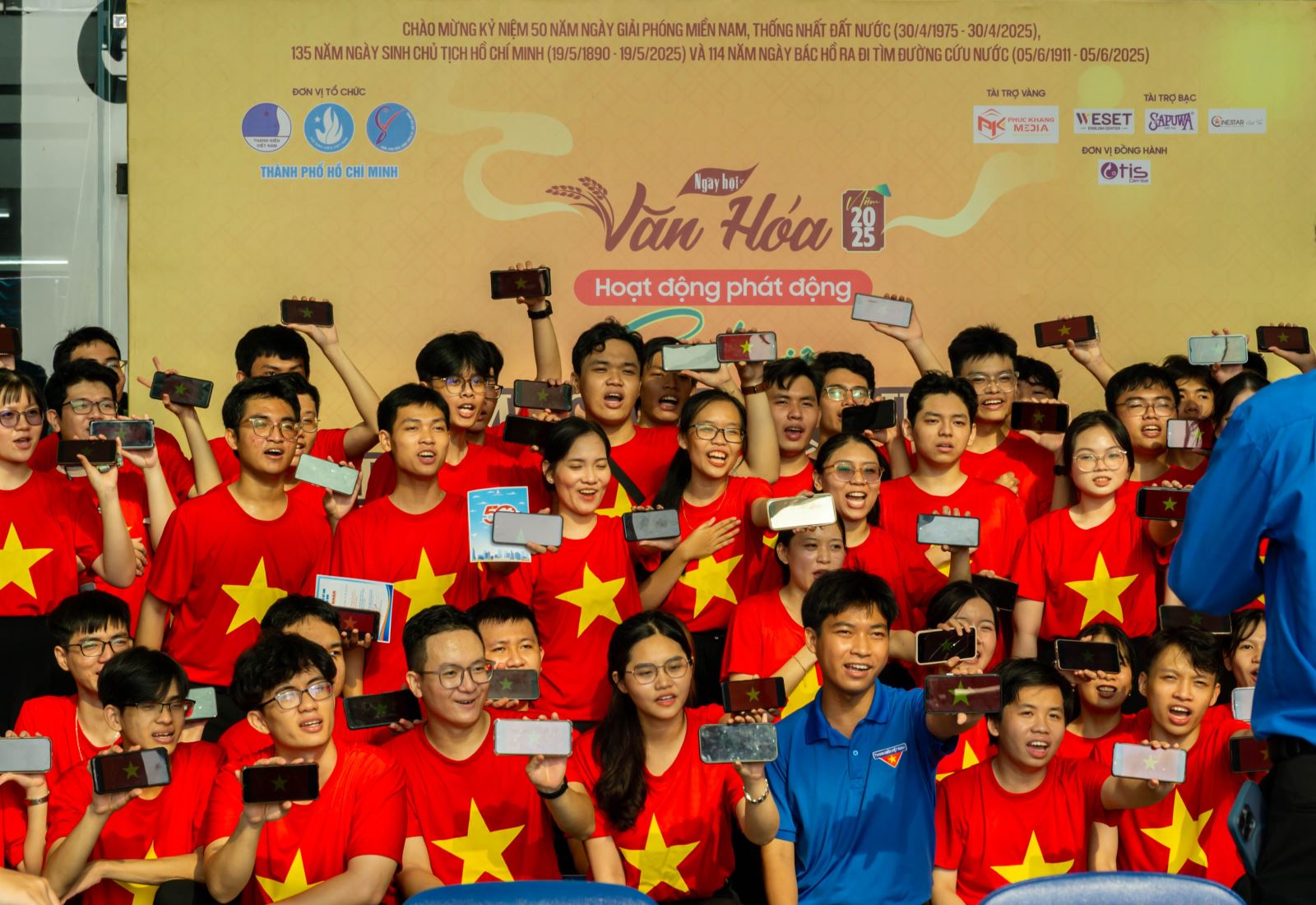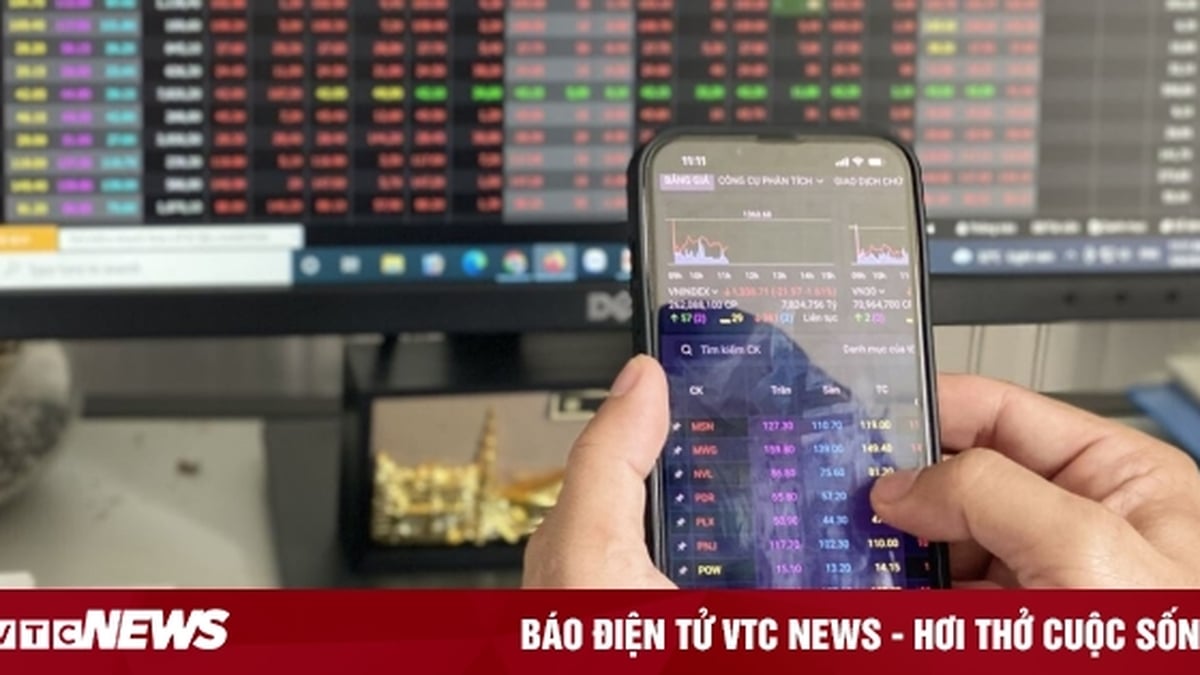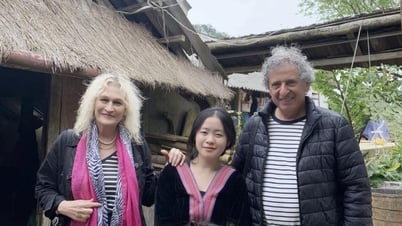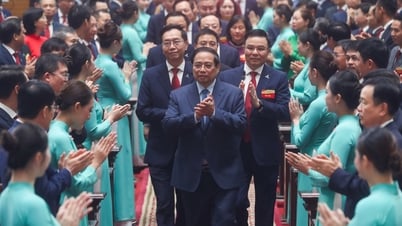New space for creativity and self-expression
The growing popularity of social media has changed the way young people interact and express their personalities. Previously, this only happened in direct environments such as schools, workplaces or community events, but now social media has become the first and main space for young people to tell their stories.
It can be seen that with just a phone and a personal account, anyone can reach thousands, even millions of other users. From there, social networks have created an environment that promotes creativity, quick responses and open connections. This is the platform for young people to embark on the journey of building their personal brand, not through television or newspapers but through the content they post every day.

From community activities, each young person has their own perspective and expresses it through social platforms.
Dao Quang Duy Dat, a content creator on TikTok, shared: "At first, my friends and I only filmed a few entertainment videos . Seeing others doing it for fun, we tried it. But the more I did it and received positive feedback, the more I thought about creating more polished content with a longer-term orientation."
From everyday images, personal stories to sharing about lifestyle and spiritual values, social networks help young people not only express themselves but also find communities with common interests. If properly nurtured, virtual connections can become a driving force for career development, create opportunities and spread positive messages.
Notably, building a personal brand on social networks is no longer the privilege of celebrities or media experts. Anyone can shape their own image if they understand themselves, understand the public, and have a clear direction.
According to lecturer Huynh Thanh Tuan, Faculty of Information Technology, Van Lang University: "A successful personal social network channel needs three main factors: Clear content goals, consistent messages and meticulous presentation quality. It is a combination of strategy and emotion".
That is why more and more young people choose to share their journeys: studying, starting a business, being a travel enthusiast, exploring the countryside... Everyday stories told in their own voice and with authentic images have made a difference and made viewers trust them.
More than just a trend, personal branding has become a career asset. Many individuals, thanks to building a reputable image, have had the opportunity to collaborate on advertising, start a business or expand their influence in the community.
The dark side and responsibility in the digital age
However, the journey of building a personal brand is not all roses. Along with fame comes the pressure to maintain an image, the fear of being judged, or falling into a "boycott culture" when making a mistake, even unintentionally. Many people share the feeling of fatigue when having to "live two lives": One online, one in real life.
In addition, the risk of being impersonated for fraud is increasingly worrying. According to data from the Ministry of Information and Communications , in 2024, there were more than 2,300 reported cases of accounts impersonating celebrities or influencers for profit.
There are also many cases where the original value is sacrificed for views. Sensational, shocking content can easily go viral but at the same time erodes the audience's trust. Recent incidents involving individuals such as Hang Du Muc, Quang Linh Vlog or Miss Thuy Tien who used images to advertise low-quality products are a wake-up call about ethics and responsibility that come with digital influence.
According to media expert Nguyen Thi My Van, in order to develop sustainably, content creators need to clearly define their "core values". That is what makes young people different and what audiences remember for a long time, not clips that pass by following short-term trends.
Some practical principles suggested by many experts include: Focus on content of real value; engage with viewers authentically; choose the right platform instead of spreading yourself thin and constantly learn content production skills.
A typical example is NM Phuc, a young man from Da Lat, who records life in the foggy city with rustic, emotional images. Phuc does not follow trends but stays loyal to a gentle, authentic style. Thanks to that, Phuc's TikTok channel attracts hundreds of thousands of followers and contributes to promoting local culture in a natural, intimate way.
Mr. Nguyen Lam Thanh, General Director of TikTok Vietnam also affirmed: "The most important thing is still the audience. Content creators need to understand how to approach, interact and create long-term value. In particular, content with traditional cultural elements is highly encouraged because it helps spread community values in the digital age."
Many opinions also believe that, in the strong digital flow, each individual can become a "content creator" with their own voice, contributing to enriching the common cultural space. Accordingly, social networks are not only an informal educational platform where personal values are expressed and spread, but also require sustainable investment, taking culture as the core to connect the community and create a unique mark in a volatile era.
According to Tin Tuc Newspaper
Source: https://baohoabinh.com.vn/16/201244/Dinh-hinh-lai-xu-huong-xay-dung-thuong-hieu-ca-nhan-cua-gioi-tre-tr111ng-thoi-dai-so.htm



































































































Comment (0)